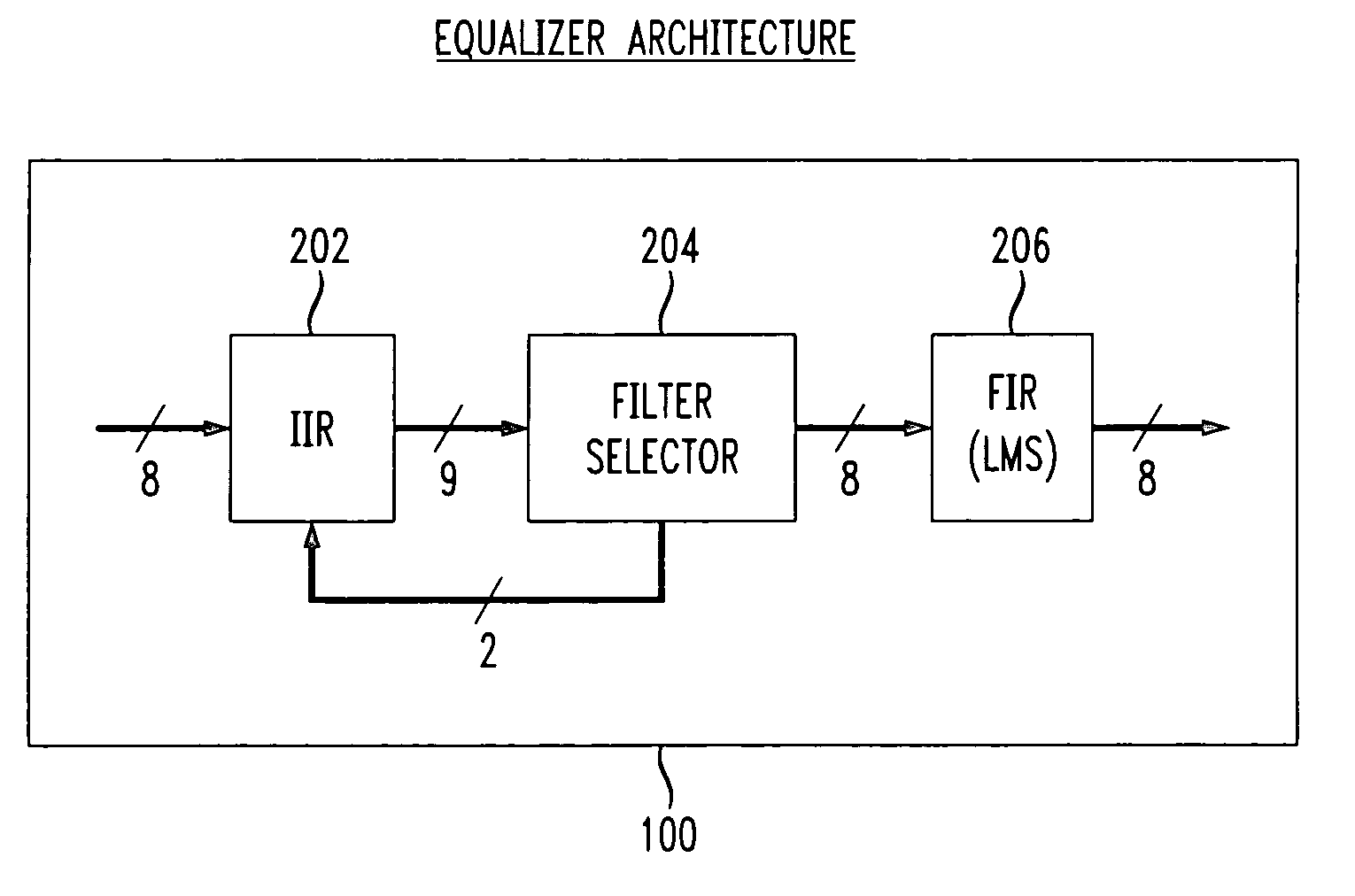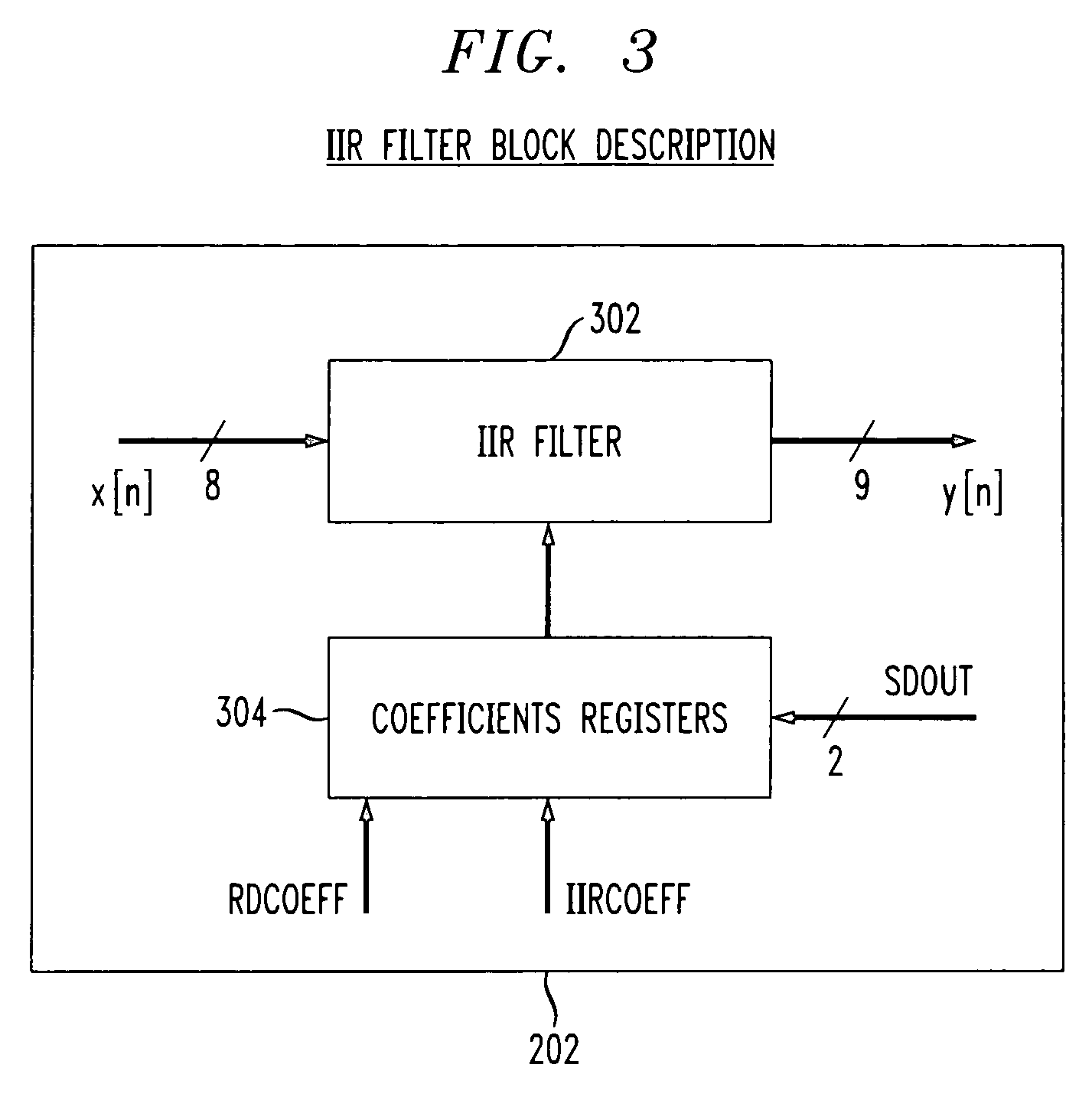Digital adaptive equalizer for T1/E1 long haul transceiver
a transceiver and digital technology, applied in the field of t1/e1 communication, can solve the problems of data transmission dispersion and other debilitating degradations during transmission, delays and reliability issues,
- Summary
- Abstract
- Description
- Claims
- Application Information
AI Technical Summary
Benefits of technology
Problems solved by technology
Method used
Image
Examples
Embodiment Construction
[0022]The present invention relates to the implementation of a digital adaptive equalizer for a T1 / E1 long haul transceiver (i.e., the receiver portion) which is capable of adapting to a wide range of cable types, cable lengths, and / or other data transmission impairments. The digital adaptive equalizer corrects for or equalizes impairments caused in a T1 or E1 type signal which has presumably been degraded upon transmission, particularly where the cable type and / or length may be unknown (or have changed). The digital adaptive equalizer for T1 / E1 long haul transceivers in accordance with the principles of the present invention can be implemented easily using low voltage digital technology. The invention has particular application when the T1 / E1 signal has been received through an unknown channel (e.g., an unknown cable type, length, and / or other impediments to ideal transmission).
[0023]The digital adaptive equalizer contains two filter blocks, i.e., an IIR filter and a FIR filter, to...
PUM
 Login to View More
Login to View More Abstract
Description
Claims
Application Information
 Login to View More
Login to View More - R&D
- Intellectual Property
- Life Sciences
- Materials
- Tech Scout
- Unparalleled Data Quality
- Higher Quality Content
- 60% Fewer Hallucinations
Browse by: Latest US Patents, China's latest patents, Technical Efficacy Thesaurus, Application Domain, Technology Topic, Popular Technical Reports.
© 2025 PatSnap. All rights reserved.Legal|Privacy policy|Modern Slavery Act Transparency Statement|Sitemap|About US| Contact US: help@patsnap.com



